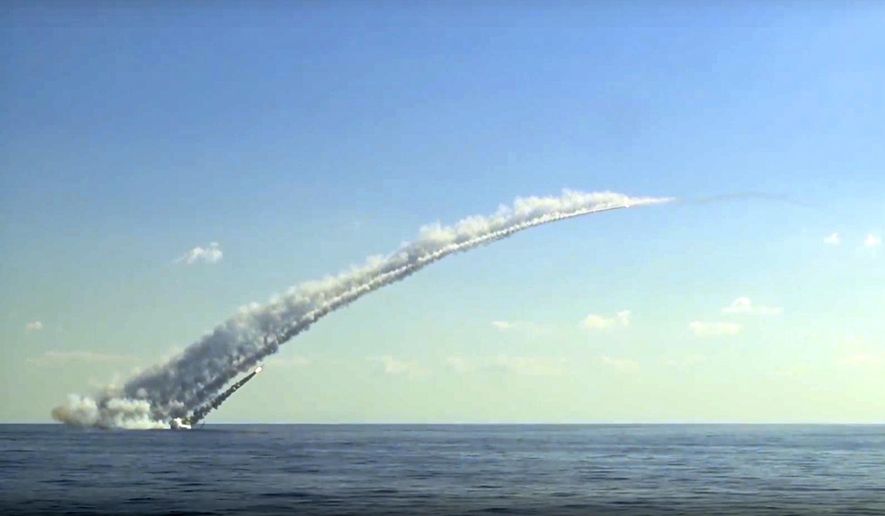Russia is ramping up work on several advanced mid- to long-range missile systems, including one weapon designed to theoretically hit any target on earth within an hour, in response to the Trump White House’s withdrawal from a key, Cold War-era weapons pact.
Russian Defense Minister Sergei Shoigu ordered the country’s military leaders to begin work on the missile project on Tuesday, less than a week after Mr. Trump announced he is pulling the U.S. out of its Intermediate-Range Nuclear Forces or INF Treaty with Russia.
Washington defended the withdrawal, saying Moscow has been cheating for years on the 1987 pact. For its part, Russia also formally pulled out of the INF pact this week, paving the way for the missile work ordered by Mr. Shoigu on Tuesday.
“From Feb. 2, the United States suspended its obligations under the INF treaty,” Mr. Shoigu told a meeting of defense chiefs on Tuesday.
“At the same time [the U.S.] are actively working to create a land-based missile with a range of more than 500 km which is outside the treaty’s limits,” he said. As a result, Russian President Vladimir Putin “has given the defense ministry the task of taking symmetrical measures,” Mr. Shoigu said, Reuters reported.
Critics of the administration’s plans argue that Mr. Trump’s decision to withdrawal from the INF pact could trigger a new arms race between the U.S., Russia and their respective allies across Europe.
Washington maintains it has fully adhered to the terms of the treaty for the last three decades, and the U.S. stands ready “to engage with Russia on arms control negotiations that meet these criteria, and, importantly, once that is done, develop, perhaps for the first time ever, an outstanding relationship on economic, trade, political and military levels,” Mr. Trump said.
One project announced Tuesday that is being fast-tracked by the Kremlin in response to the U.S. withdrawal is the development of a land-based version of the Kalibr cruise missile.
Russia has already conducted several tests of its Kalibr cruise missile in the Barents Sea and elsewhere in the North Atlantic, which has been used by Russian warships moored off the Syrian coastline in long-range strikes against Islamic State and other Syrian paramilitary groups.
Another missile effort getting renewed focus is Russia’s hypersonics program. Traveling at five times the speed of sound, only nuclear weapons can travel farther and faster than hypersonic missiles. On Tuesday, Moscow announced plans to extend the range of its current hypersonic arsenal.
Russian military officials announced the first deployment of the Kinzhal or “Dagger” hypersonic missile aboard 10 MiG-31 fighter jets in May. In December, Moscow for the first time field tested the Avangard weapon system — a nuclear-capable hypersonic weapon that can theoretically travel 20 times the speed of sound.
Russian military leaders plan to have the missile work that was announced Tuesday wrapped up by the end of next year, with the new systems becoming initially deployable by 2021, Reuters reported.
• Carlo Muñoz can be reached at cmunoz@washingtontimes.com.




Please read our comment policy before commenting.